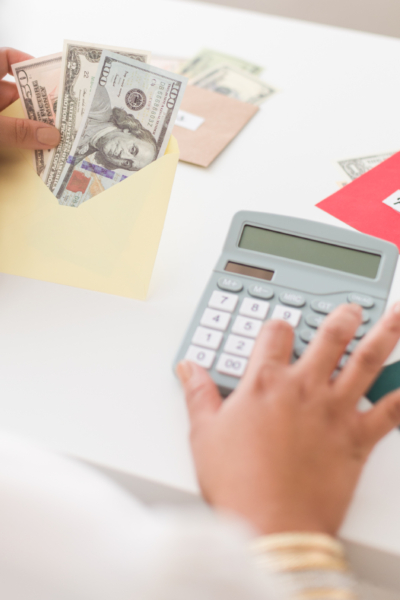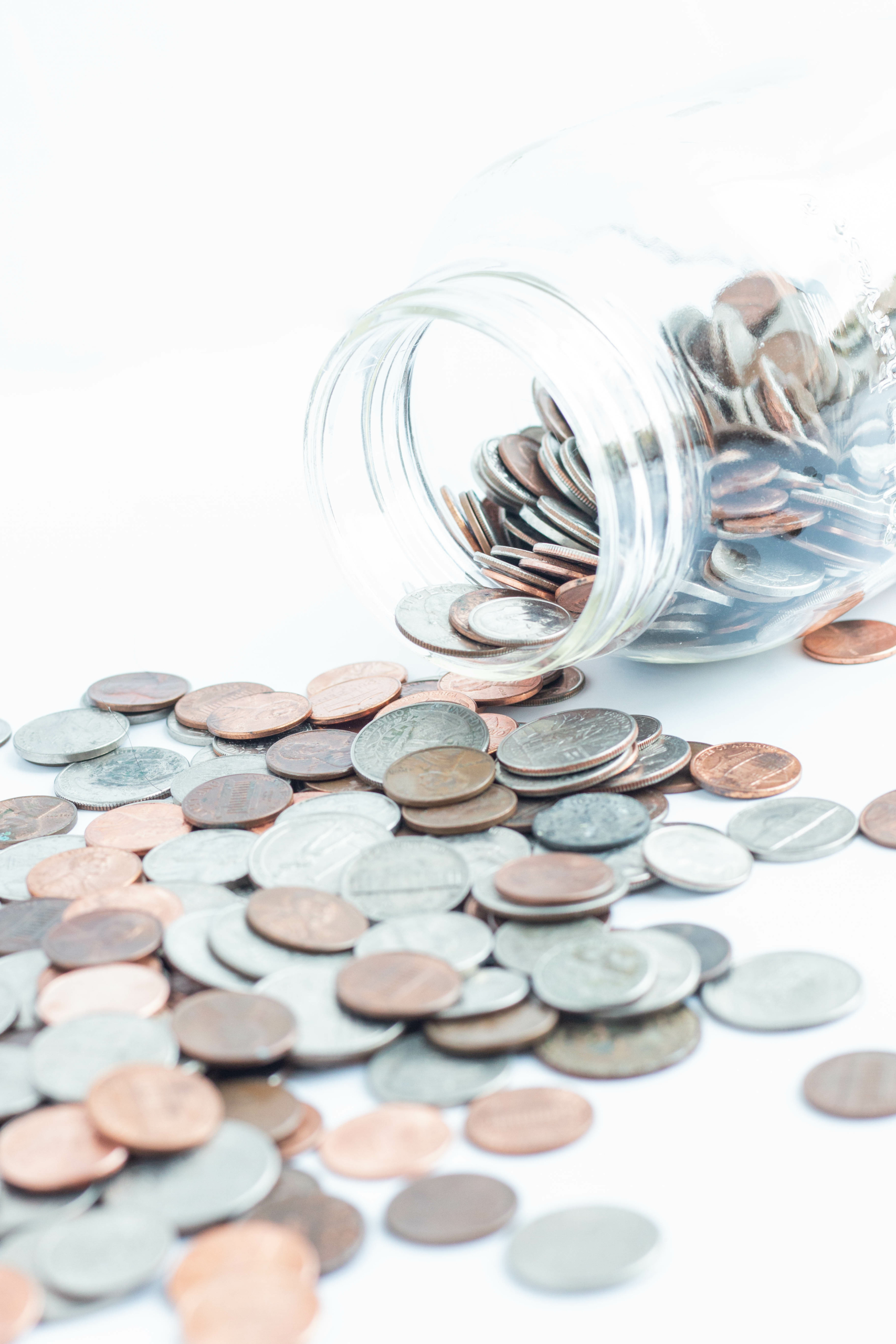Guest Post by Sandie Ortiz.
The holidays are wrapping up and the new year is quickly approaching. If you’re anything like me, you like to set new year’s resolutions. But if you’re also like me, you may find yourself repeating those same resolutions year after year.
At the time I’m writing this, my new year’s resolution has been to get my finances under control and get out of debt–for three years in a row. At the end of every year I would look back and realize I had made no progress…or worse, that I had added to my debt.
I really didn’t understand why year after year, I wasn’t making any progress at all. I knew that there were times that I would really work hard and send in multiple debt payments a month. So what was the deal? Why was I not making any progress on paying off my debt?
I realized the answer was simple: at the same time that I was paying off my debt, I was adding to it just as fast.
That may sound like a “duh” moment. Why on earth would I keep adding to my debt if my goal was to pay it off?
I’d chosen to use the debt snowball method to pay off my debts. This means that I’m focusing on one debt at a time (the smallest balance) and only making minimum payments on the rest of my debts. So I had all these credit cards open that even though I knew I shouldn’t touch, I was still able to use them if I “needed to.”
As you can imagine, I found a reason to use the cards. We bought a house and there were so many things we “needed”–a lawnmower, new furniture, etc. There were college courses to pay for (did we really forget those needed to be paid about every 4 months?) I even opened a new credit card to receive reward points to take a vacation, which turned into a $6,000 mistake.
The problem was, I would use most of my extra money to pay off debts, then I would realize there were things I needed to buy that I didn’t have the money for. So I would buy those things with credit cards that still had available money on them. It was like an endless cycle that was completely ruining any progress I was making on paying off debt.
Now that I’ve come face to face with my problem, I’ve decided that this year is going to be different!
This is the year that I am actually going to pay off debt. But instead of just saying this and trying and failing (again), I’ve made a plan for my finances that will actually make a difference. If you have financial goals you want to see get done this year, check out these steps to take…
6 Ways to Succeed With Your Finances in the New Year
1. Stop adding to your financial troubles
Did you know you can call and cancel your credit cards, even if they have a balance?
This is something I really didn’t know was possible until I started doing a little bit of research on how credit card companies work. It is possible to close your account and continue to pay the balance until it is paid off. I would caution you to contact each credit card company first, because some may demand the balance be paid in full at the time of closing. If this is the case, simply cut up the card and lose the number so you’re not tempted to use it for online purchases either. Continue to pay the balance down, and then once it’s paid off, close it for good.
If your goal is to finally save up that 6 month emergency fund, but you keep pulling money out of savings for every little thing, make it hard to access. I have an online bank account setup, and I have it set to automatically transfer money to the savings every time I get paid.
If I think I need to take some money out of savings, I know that I have to wait a few business days for the money to get from one account to the other. This almost always makes me stop and realize that I don’t need the money that bad.
Related: 5 Things People Who Are Debt-Free Don’t Do
2. Automate as much as possible
Another way on how to improve your financial situation is by automating as much as you can. This is a great strategy because you do the work to set it up once, and then the system takes over from there on out and works FOR you.
Let’s start with savings. Go to your financial institution and set up an auto-transfer to move money from your checking account to your savings account every time you get paid.
I want you to start with your very first paycheck of the year (or jump in as soon as you can), and set it up to reoccur every time you get paid from here on out (weekly, biweekly, monthly, etc.)
You should choose an amount that seems reasonable, but maybe stretch yourself a bit. If you decide on $10 a paycheck, and you get paid weekly, you’ll have over $500 saved by the end of the year! I bet you won’t even miss that money out of your check!
Stretch yourself to see how much you can save. Just doubling the amount to $20 a paycheck (around $80 a month) would mean an extra thousand dollars in the bank next year.
You can also automate debt payments. Contact your credit company to see if you can start auto-paying your bill, and if you can add extra to the principal with each payment. If they won’t allow you to pay anything but the minimum, set up your own form of “auto-pay.” You can set a reminder on your calendar to make an extra debt payment each time you get paid. Keep the websites bookmarked and your login information stored close-by so all you have to do is login and pay.
The important thing is, make working on your goals as easy as possible. By automating as much as you can, you can “set it and forget it.” If you treat your auto-pays and transfers like any other bill, they will get paid every month and get you closer to your goals each time.
Related: How to Live Well on $18k/year
3. Pick one new habit to focus on each month
A huge part of succeeding with your goals in life is to create new habits (and sometimes abandon old ones) to get you there.
Think of it this way–a year is a pretty broad term to think about. But when you break it up into 365 days, that gives you 365 chances to accomplish your goals. That means that every day you are either working towards completing your goals, or working away from them with the habits you follow.
I want you to pick one thing you’re struggling with financially and focus intently on it for the month, thus creating a new habit. Pick a new habit to work on each month, adding to the one you mastered the month before. I’ll start you off with six solid habits to choose from:
- Create a budget – use online tools or good old pencil and paper and create a budget for the month. Visit it regularly to make sure you stay on track.
- Track your spending – print out an expense tracker and log every single thing you spend money on, every day.
- Build up your savings – focus on putting each extra dollar this month into your savings account, no matter the amount.
- Add extra income – find a few ways to make some extra money this month. Babysit a couple evenings, see if you can mow the neighbor’s yard, etc.
- Save money on groceries – research ways to start saving at the grocery store. This could include only shopping sales and generic items, buying in bulk, etc.
- Have a spending freeze – break your shopping addiction by cutting out any unnecessary spending cold turkey. Stick to this for the whole month and you’ll find tons of creative ways to save money.
Choose any of the ideas from the list above, or come up with some ideas of your own, and start making some new financial habits to stick to. This would also be a great time to break any bad habits you might still be holding on to, such as not keeping track of your bank account and getting overdraft fees, opening new credit cards, etc.
Related: How to Create a Budget that’s Right for You and 40 Things to Sell to Make Money
4. Set strong goals and make them visible
It’s easy to say your new year’s resolution is to get out of debt this year. It’s also easy to say it to yourself and then forget about it the second you’re tempted to buy something you can’t afford.
My advice would be to set two or three very specific goals, with due dates if possible. If your huge goal for the year is to pay off all of your debt, break it down into a few sub-goals. It could look something like this:
Goal 1: Pay off Visa card. Due date: February 28th.
Goal 2: Pay off student loan debt. Due date: July 31st.
Goal 3: Pay off personal finance loan. Due date: December 15th.
Writing out your goals like this will help you visualize your progress as you knock out each specific debt. You can also apply this to savings goals by making each small amount saved a sub-goal to hit along the way.
Be sure to write your goals down somewhere you can look at them often–on the fridge, at your desk, or even in your wallet!
5. Set action steps for you goals
Another way to make your goals more achievable is to add action steps to them. For instance, let’s look at our goal examples from above:
Goal 1: Pay off Visa card. Due date: February 28th.
Action Step: Use end of the year bonus/tax return to pay off card.
Goal 2: Pay off student loan debt. Due date: July 31st.
Action Step: Get a secondary income on the weekends. Host a garage sale to finish this debt off.
Goal 3: Pay off personal loan. Due date: December 15th.
Action Step: Cut out all dining out, except for one special occasion a month.
Adding action steps to your goals rounds out the puzzle–you’ve visualized your goals and written them down, created a due date for when you want to complete them, and now you have a method for getting them done.
Related: Frugal Living Principles Everyone Needs to Know
6. Stick to Your Plan, No Matter What
Finally, you just have to decide that nothing is going to stop you from reaching your goals this year. You’ve determined yourself to stop adding to your financial struggles, you’ve set goals and made them visual, and you’ve created an action plan to get those goals done.
Now that you’ve set yourself up with a solid plan for success, all that’s left to do is stick to it! A few tips for sticking to your plan:
Find someone to keep you accountable. This could be someone going through similar financial goals themselves, so you’re both on the same page.
On those days you feel like it’s not worth it, find some motivation. Listen to podcasts, join Facebook groups, and read inspirational books.
Imagine yourself this time next year–what will you be able to do once you’ve paid off your debt, funded your savings account, etc.?
Set your finances up for success this year by sticking to your action plan. To sum up, here are the steps to follow:
- Stop adding to your financial troubles.
- Automate as much as possible.
- Focus on a new habit each month.
- Set strong goals and make them visible.
- Set action steps for those goals.
- Stick to your plan, no matter what.
Make this the year you finally gain control of your finances and knock out those financial goals–we’ll be here to cheer you on every step of the way!
Looking for a side hustle to earn extra money and pay debts off MUCH faster? Have you considered selling on Facebook Marketplace? Check out my easy-to-follow Facebook Marketplace store guide (plus all my secrets tips and tricks!!) to selling items like hotcakes and making great money selling things you no longer need!











